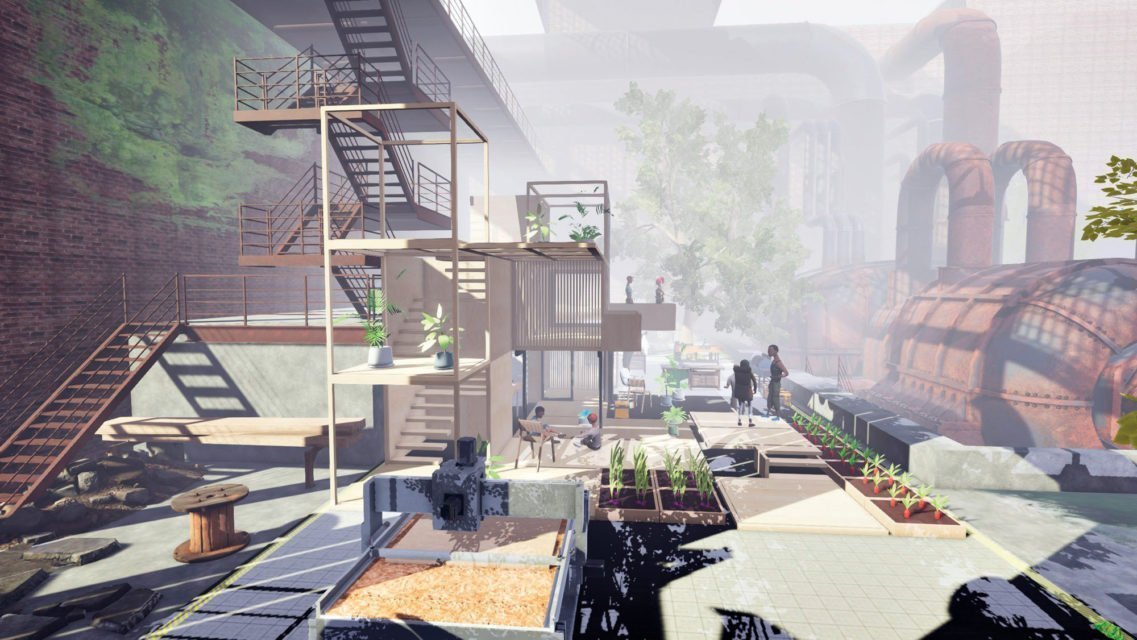Metaverse is the name used to name an immersive, collective and hyper-realistic virtual environment in which people can live together using 3D customized avatars.
Amid the confusion surrounding the term, Facebook Inc. In October 2021, he announced that the organization would change its name to Meta.
Facebook’s metaverse link is old and commercial interest is nothing new. In 2014, the group acquired Oculus, a company that makes the virtual reality headsets and equipment needed to access this new reality, which is still under construction.
The idea is that metadata has a virtual economy of its own, and people can work, buy a house, buy clothes, go to parties, hold meetings, and actually have an online life. Blockchain and the technologies that run on it are crucial to this new reality.
Blockchain could be the foundation of the metaverse economy. Born with Bitcoin at the end of 2008, this technology enables the creation of immutable records without the need for a third party.
Metaverse Architecture
Virtual environments are becoming more pervasive and more complex as companies compete to create platforms that will draw people to their corners of the metaverse. For platforms like Spatial.io, Microsoft Mesh, and Facebook’s Horizon Worlds, the metaverse feels like an extension of work or life, where avatars can meet in bright modern settings or landscapes of supernatural encounters.
Meanwhile, mega-platformers like The Sims, Minecraft, Second Life, and Roblox have been building vast and immersive virtual worlds for years, allowing players to build their own structures and explore these ever-expanding landscapes.
In the future, humans will not experience a single metaverse; instead, they will navigate multiple interoperable metaverses, all capable of interconnecting on a digital space carpet, and all powered by blockchain and on-platform currencies that power their meta-economy.
For centuries, architects, engineers, and builders have largely dictated the shape of the built environment. The complexity of the physical world requires measures such as regulations, zoning, accreditations and best practices. There are also good reasons why not everyone can build a skyscraper.
The metaverse, on the other hand, is often thought of as a collective retelling of the built environment. It is often compared to the Wild West, where anyone with a pioneering spirit and a bit of cryptography can plant their own flag and create their own slice of the virtual world as they please.
Truth, of course, is less egalitarian than that. The metaverse is increasingly mediated by the same forces that control real estate in the physical world. Already, speculative cryptocurrency investors and real estate companies are purchasing vast areas of “land” in the metaverse, where some of the sandbox could be worth thousands of dollars.
On Decentraland, one of the largest platforms in the Metaverse, the price of land in the game’s busiest sandboxes has soared over $10,000.
Virtual terrain to build virtual buildings and some quite different from what we’re used to, lawless and without constructive obstacles.

The End of Obstacles
The Metaverse has no gravity and no material constraints. Meanwhile, things like structure, materiality, and cost go to waste,” says Leon Rost, director of Bjarke Ingels Group (BIG), who has been working on some virtual projects for clients. This lack of stylistic restraint has attracted architects interested in pushing the official boundaries of what space can be. BIG has partnered with UNStudio to develop a virtual meeting platform called SpaceForm, where people can collaborate with holographic charts that display 3D renderings and data visualizations in futuristic rooms in real time.
Often these areas are designed and coded by users or developers with no formal design experience. This may seem like an existential threat to some architects, but experts see this space as an opportunity to question who can and should be involved in the design process.
Some architects recognized new opportunities and expanded the boundaries of design into the virtual world. Zaha Hadid Architects presented “NFTism”, a virtual art gallery that explores architecture and social interaction in the metaverse at Art Basel Miami.
Customer Inversion
When it comes to attracting customers and projects, does the metaverse work with the same real-world way of working?
In the real world, architects and designers need clients to set up their offices. It seems logical that architects spend most of their time designing buildings, but in practice most of an architect’s efforts are geared towards finding more clients and projects.
The creative economy in the Metaverse can guarantee equal and ample opportunities for emerging and/or underrepresented designers, regardless of gender, race, sexual orientation. You can even earn commissions if you want to develop virtual experiences for brands and landowners. Users own it, thus reducing customer acquisition costs to almost zero.
We can only have one winning design for each design competition. Every designer has great designs that sleep on their hard drives. Besides hosting an “unbuilt architecture” exhibit, you can bring it to life in the metaverse to share your creativity with the world.
Each niche can find its own group in the community, create its own industrial chain and find users who identify with it.
Metaverse and Design
What about in the world of design?
Earlier this year, lighting design and technology company Nemo announced it was the “first” design company to break the NFT world.
He did this with the collection of Luca Baldocchi, a digital interior designer. Baldocchi worked with Nemo to reinterpret some of the brand’s iconic physical lighting solutions in a “metaphysical way.”
Nemo’s classics were set in surreal settings and inevitably gained a new force of speech.
Metaverse and Transport
Even the transport universe may be affected by the advent of this new way of communication, living and working, as in the case of travel.
There is no longer a long-term future for long-distance business travel, thanks to the trajectory of online collaboration tools. So anyone on a future plane will be some form of leisure traveler doing what leisure travelers do.
As all travelers will be recreational travelers, the outlook of airports and planes, train and rail terminals, stations and capsules, and other transport infrastructure and vehicles will change accordingly.
With so much work going on in the Metaverse, mass transit systems such as subways and light rail, originally designed to orient people’s bodies to and from central urban centers at predictable morning and night rhythms, struggle for availability and funding. it will.
This does not mean that these systems will disappear completely. Instead, the metaverse itself will help transform its use. This is because the metaverse involves creating high-quality digital twins of what we experience physically, including transportation infrastructure, from really big things like airports and highways to bus stops and bike parking lots, and then managing them digitally.
This would create all sorts of new efficiencies, at least in theory. With these efficiencies, we will likely need less infrastructure, which means we won’t need to build and maintain as much infrastructure.
There is still much to question, understand and work on as to how these results will reach areas we can’t even imagine.






